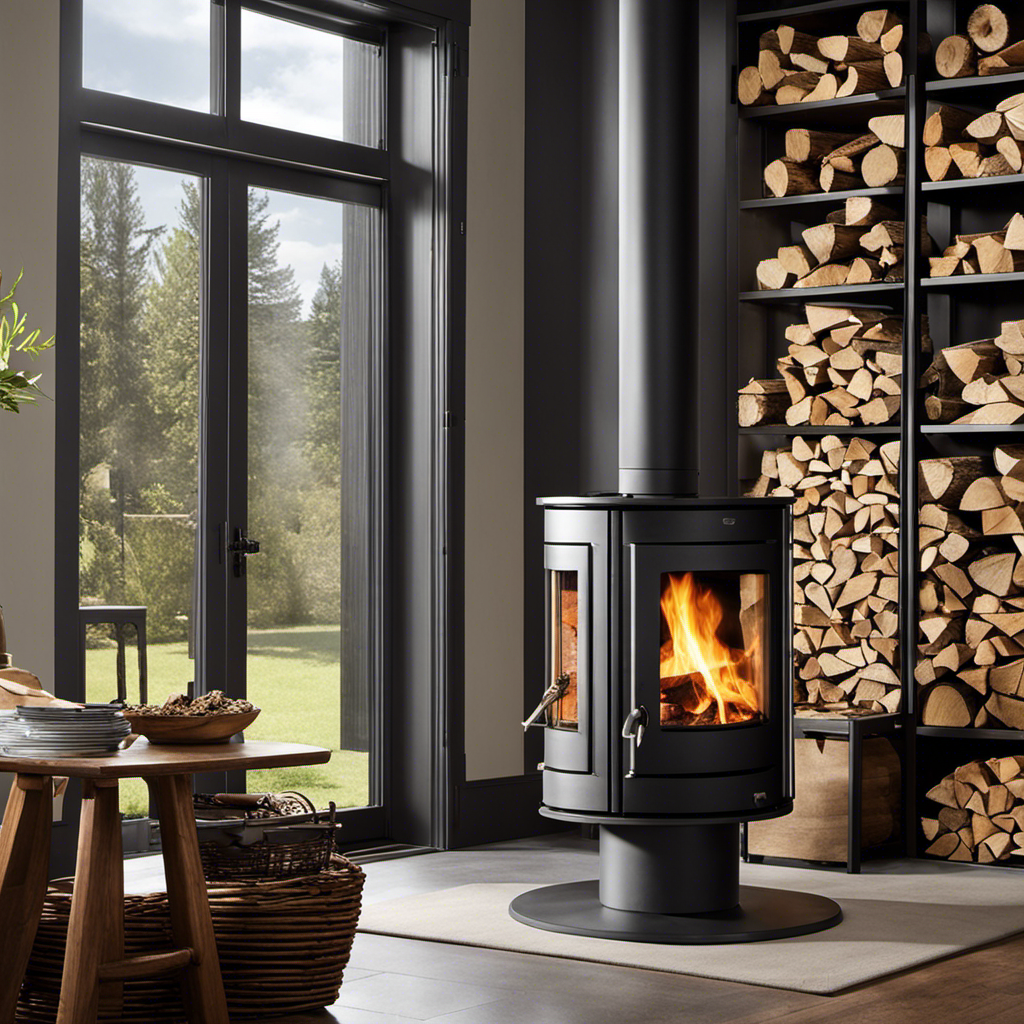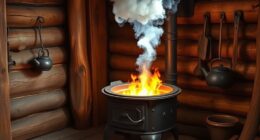As a seasoned user of wood stoves, I’ll guide you through the subtleties and specifics of this cozy heating technique.
Picture this: crackling flames, the scent of burning wood, and a comforting warmth enveloping your home.
In this article, I’ll share my expertise on safety precautions, gathering firewood, lighting the fire, controlling airflow and heat, as well as cleaning and maintenance.
Get ready to master the art of operating a wood stove and create a cozy haven all winter long.
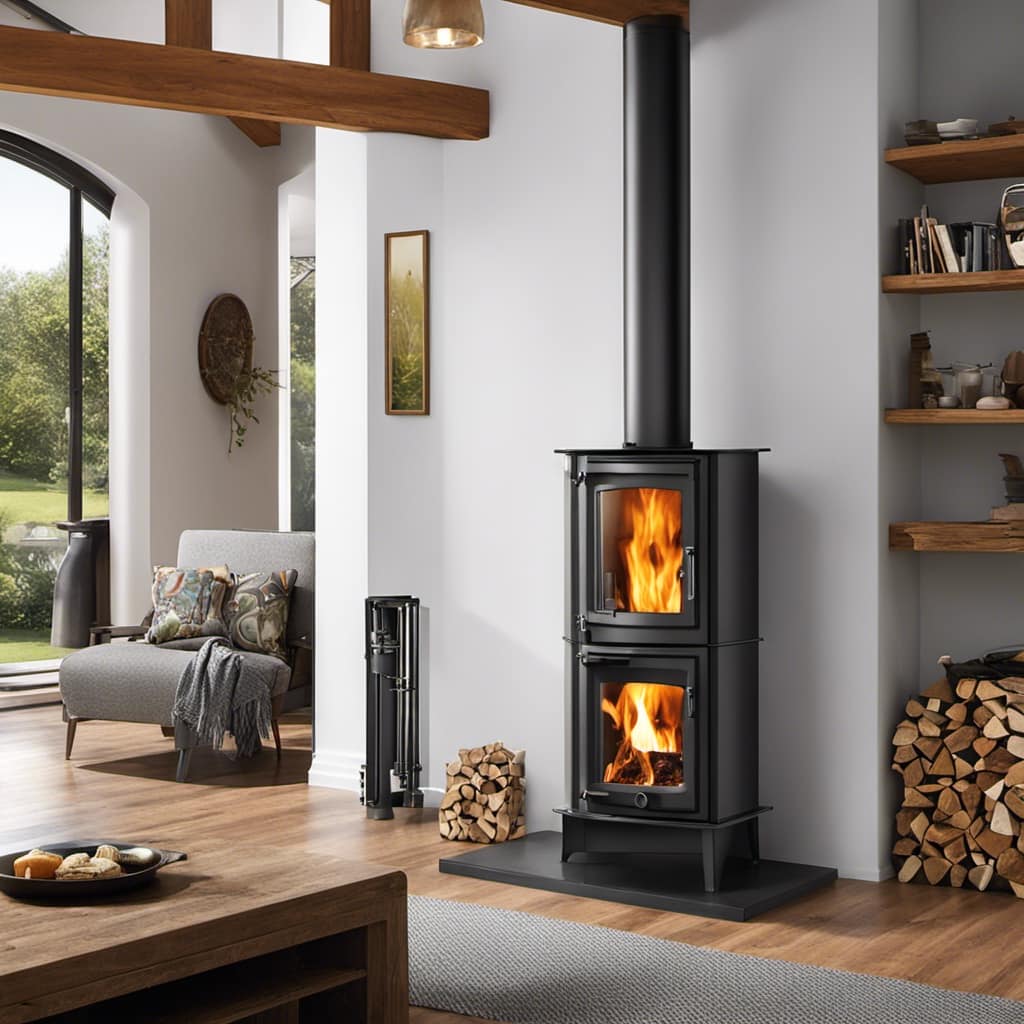
Key Takeaways
- Use appropriate safety gear and follow safety precautions when operating a wood stove.
- Gather properly seasoned firewood and store it correctly for efficient burning.
- Follow proper steps to light the fire, including using dry kindling and arranging it properly.
- Control airflow and heat by adjusting the damper and using a thermostat control, and use dry, seasoned wood to prevent smoke and creosote buildup.
Safety Precautions
I can’t stress enough the importance of following safety precautions when operating a wood stove. It’s crucial to prioritize your safety and the safety of those around you. One of the first steps is to ensure that you have the appropriate safety gear.
This includes heat-resistant gloves, goggles, and a fire extinguisher nearby. These items will protect you from potential burns and allow you to respond quickly in case of an emergency.
In addition to safety gear, proper ventilation is essential when using a wood stove. Make sure that the area where the stove is located has adequate airflow. This can be achieved by opening a window or using a vent to allow fresh air to circulate.
Proper ventilation helps prevent the buildup of carbon monoxide, a colorless and odorless gas that can be deadly if inhaled in high concentrations.
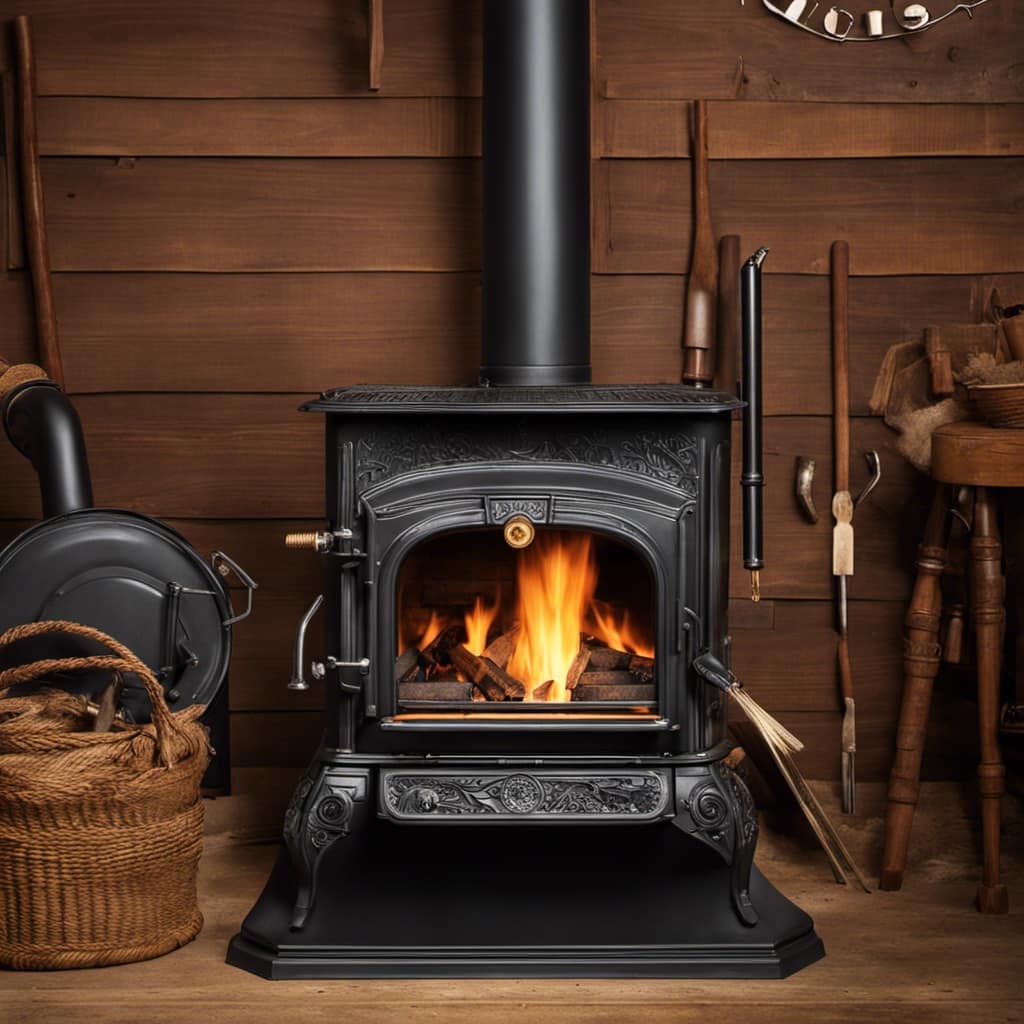
Gathering Firewood
To keep the fire going, I need to gather enough firewood. It’s essential to have a good supply of seasoned firewood to ensure a warm and cozy atmosphere in my home. Here are some important points to consider when gathering firewood:
Seasoning firewood: It’s crucial to use properly seasoned firewood for efficient and clean burning. Seasoned firewood has a moisture content of around 20%, making it easier to ignite and produce more heat. Green or freshly cut wood contains a high moisture content and should be avoided as it can create excessive smoke and creosote buildup in the chimney.
Types of wood for burning: Different types of wood have varying burning characteristics. Hardwoods such as oak, maple, and birch are excellent choices as they burn slower and produce more heat. Softwoods like pine and fir burn faster but can be used to start the fire quickly. It’s recommended to have a mix of both hardwoods and softwoods for a balanced burn.
Proper storage: Storing firewood correctly is essential to maintain its seasoning. It should be stored in a dry and well-ventilated area, preferably off the ground to prevent moisture absorption. It’s also important to cover the woodpile with a tarp to protect it from rain or snow.

Safety precautions: When gathering firewood, it’s crucial to wear protective gear such as gloves and safety goggles. Using the appropriate tools like an axe or a chainsaw with caution is essential to prevent accidents.
Lighting the Fire
The fire in my wood stove ignites easily when using dry kindling and a match. To ensure a successful fire, proper firewood storage and effective fire starting techniques are crucial.
When it comes to firewood storage, it’s important to keep the wood dry and well-ventilated. I store my firewood in a covered area, preferably off the ground, to prevent moisture from seeping in. It’s also essential to stack the firewood in a way that allows for proper airflow, promoting drying and reducing the risk of mold or rot.
When it’s time to start the fire, I gather my dry kindling, which consists of small, dry twigs and newspaper. I crumple the newspaper into balls and arrange the kindling in a loose structure on top. I then light the newspaper with a match, ensuring it catches onto the kindling. Once the flames are established, I carefully add larger pieces of firewood, making sure not to smother the fire. By gradually increasing the size of the logs, I allow the fire to build up steadily, generating more heat.
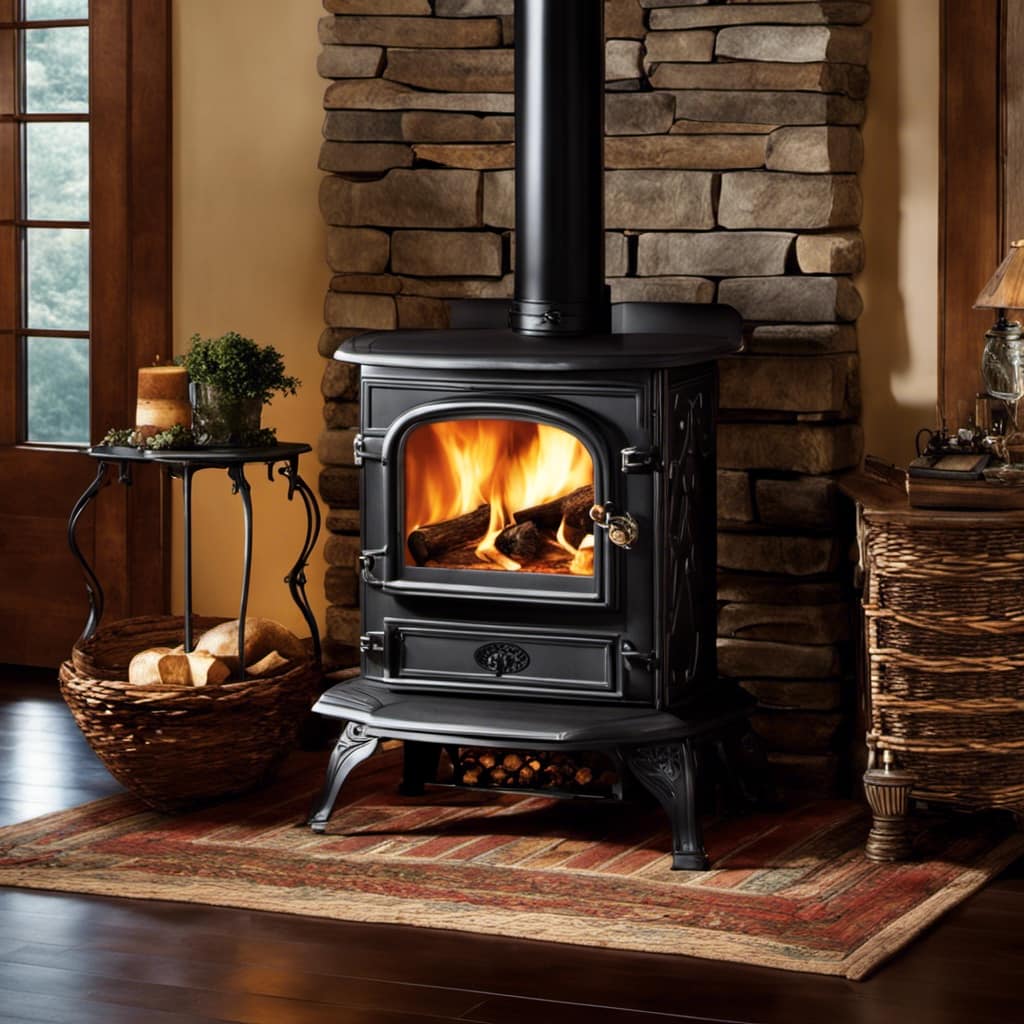
Controlling Airflow and Heat
Controlling the airflow and adjusting the damper allows me to regulate the heat produced by the fire in my wood stove. This is crucial for maintaining a comfortable temperature in my home during the colder months. Here are some key points to keep in mind when managing the airflow and heat in a wood stove:
Adjust the damper: The damper is a small metal plate located above the firebox. By opening or closing it, I can control the amount of air entering the stove. Opening the damper increases the airflow, resulting in a hotter fire, while closing it reduces the airflow, creating a slower burn and less heat.
Use a thermostat control: Some wood stoves come with a thermostat control that allows for more precise heat regulation. This device senses the temperature in the room and automatically adjusts the airflow to maintain a consistent temperature.
Manage wood supply: The type and amount of wood used can affect the heat output. Hardwoods like oak or maple burn longer and produce more heat compared to softwoods like pine. It’s important to use dry, seasoned wood to prevent excessive smoke and creosote buildup.
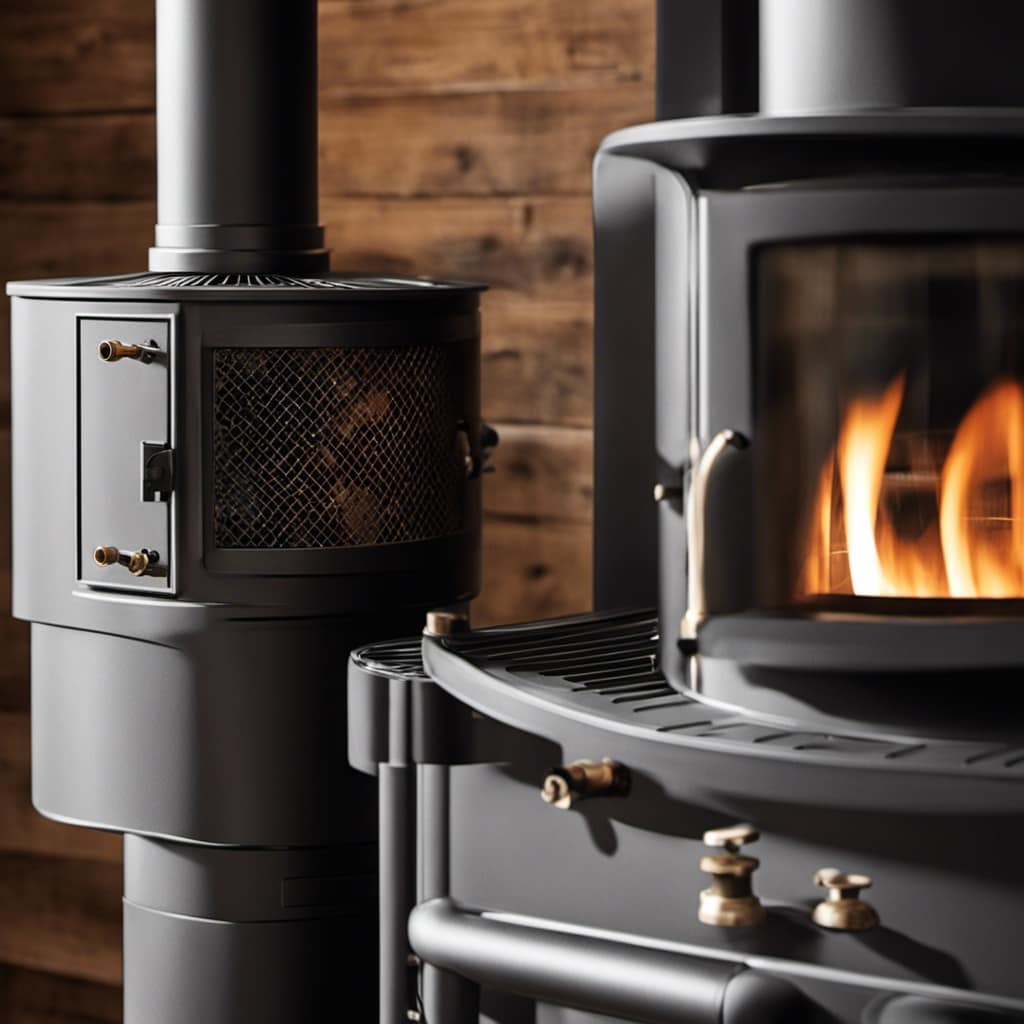
By understanding these principles and making adjustments as needed, I can effectively control the airflow and heat from my wood stove to keep my home warm and cozy.
Transition: Now that we’ve covered how to control the airflow and heat, let’s move on to the next important aspect of operating a wood stove: cleaning and maintenance.
Is Proper Venting Essential for Operating a Wood Stove?
Yes, proper venting is essential to safely operate and vent a wood stove. Without the right ventilation, there is a risk of dangerous gas buildup, potential fire hazards, and poor heating efficiency. It’s crucial to follow the manufacturer’s guidelines and local building codes for safe venting of a wood stove.
Cleaning and Maintenance
Maintaining cleanliness and ensuring regular upkeep is essential for the efficient performance and longevity of my wood stove. As a responsible wood stove owner, I understand the importance of keeping my stove clean and well-maintained. To achieve this, I rely on a few essential cleaning tools.
First and foremost, a sturdy brush with stiff bristles is crucial for cleaning the inside of the stove. This brush helps me remove any soot or debris that may have accumulated on the walls and grates.
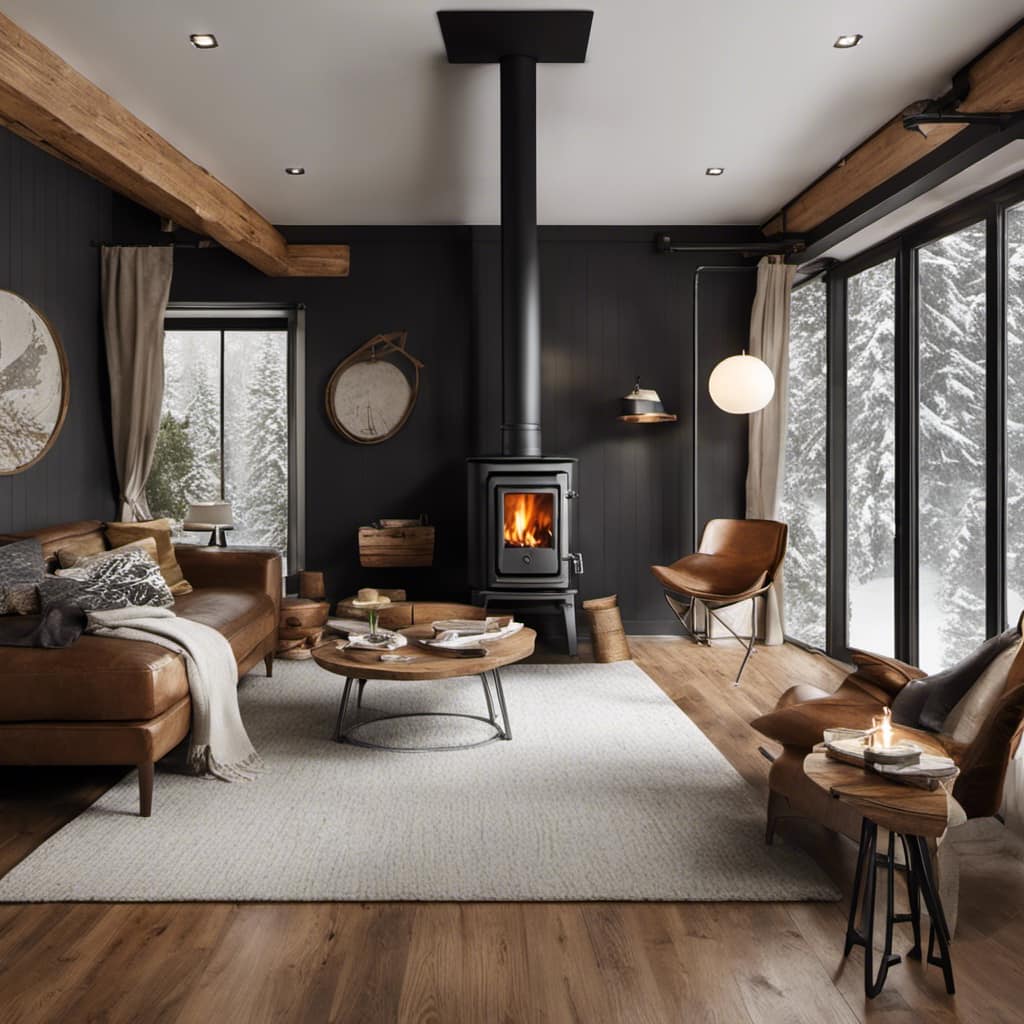
Additionally, a small handheld broom and dustpan are handy for tidying up any ash or dust that may have settled around the stove.
In terms of maintenance, chimney inspection plays a vital role in ensuring the safe and efficient operation of my wood stove. I schedule regular inspections by a professional chimney sweep to check for any blockages or creosote buildup. This not only prevents chimney fires but also ensures proper ventilation, improving the overall performance of my wood stove.
Frequently Asked Questions
What Are Some Common Mistakes to Avoid When Operating a Wood Stove?
Common mistakes can easily happen when operating a wood stove. It’s important to be aware of these errors to ensure safety and prevent potential problems.
Safety tips should always be followed to avoid accidents or damage.

By understanding the common mistakes to avoid, like improper maintenance or overloading the stove, you can operate a wood stove with confidence and efficiency.
Being knowledgeable about these mistakes will help you enjoy the benefits of a wood stove without any issues.
How Can I Prevent Smoke From Entering My Home When Using a Wood Stove?
To prevent smoke from entering my home when using a wood stove, it’s crucial to maintain good ventilation. By ensuring proper airflow, the smoke can be effectively directed outside.
This can be achieved by opening a window slightly to create a draft or by using an exhaust fan. Additionally, keeping the stove’s door tightly closed and using dry and seasoned firewood can help minimize smoke production.
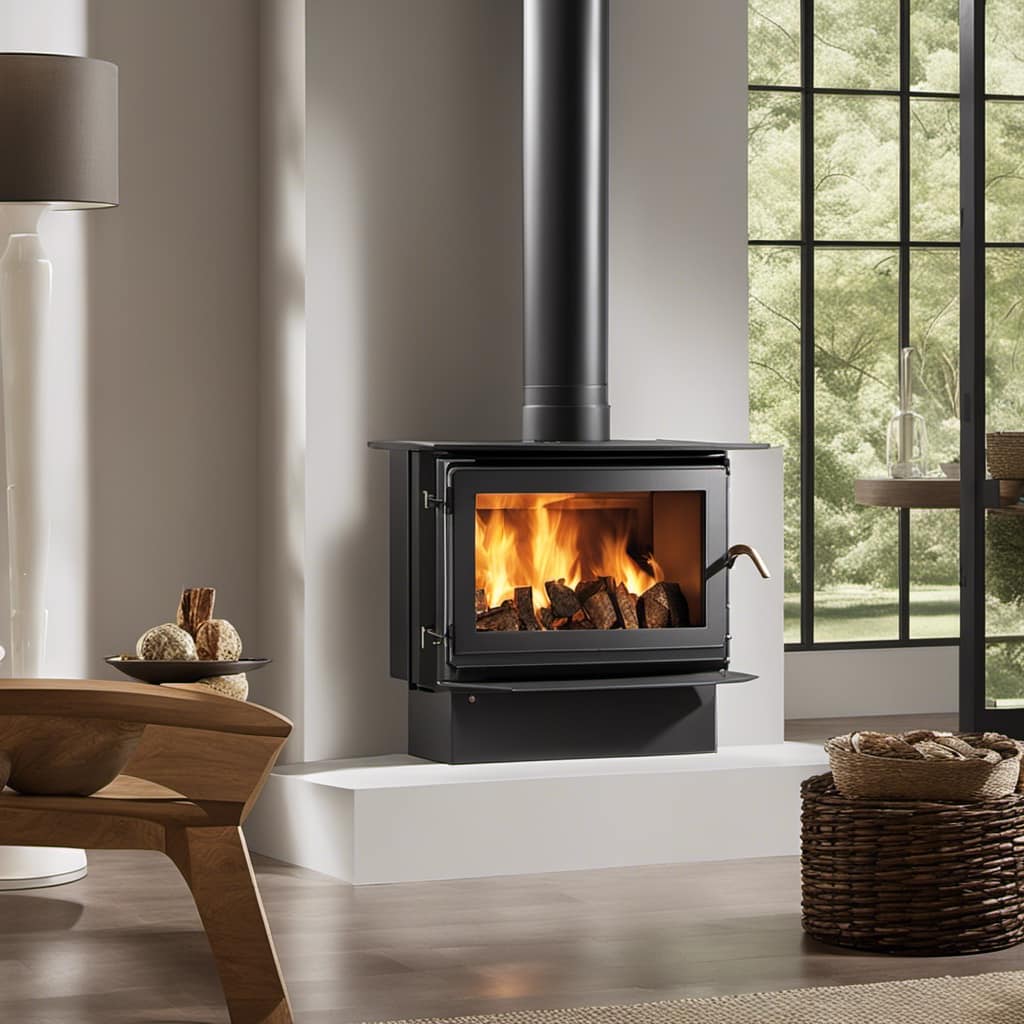
Taking these precautions will ensure a smoke-free and comfortable environment.
Can I Leave the Wood Stove Unattended While It’s Burning?
Yes, you can leave the wood stove unattended while it’s burning, but it’s important to take certain safety precautions.
It’s recommended to keep an eye on the stove and not leave it completely unattended for long periods of time. Make sure to follow the manufacturer’s guidelines for burning duration and never overload the stove with too much wood.
Additionally, ensure that there are no flammable materials near the stove and have a fire extinguisher nearby for emergencies.
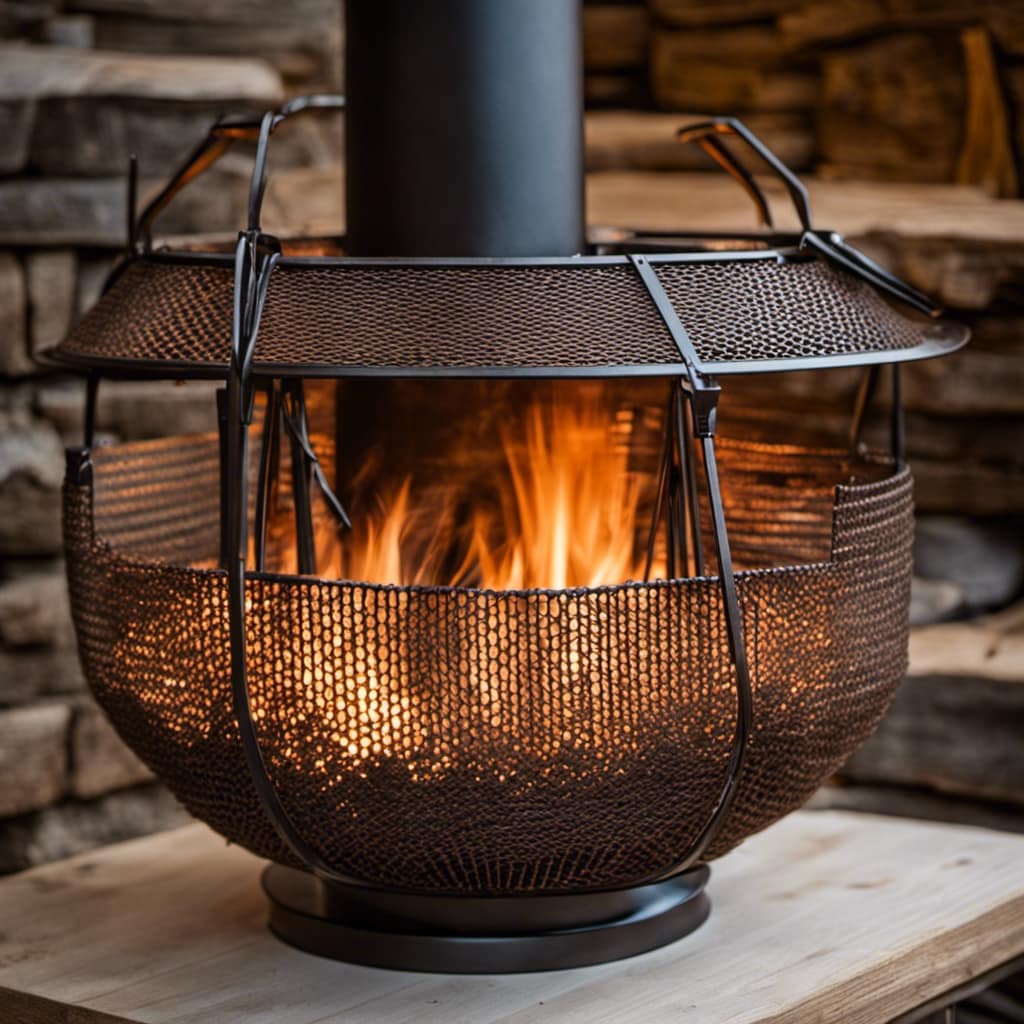
Are There Any Specific Types of Wood That Should Not Be Used in a Wood Stove?
Are there any specific types of wood that shouldn’t be used in a wood stove?
When it comes to operating a wood stove, it’s important to use the right kind of wood for optimal heat production. Softwoods like pine and fir burn quickly and may not provide long-lasting heat, while hardwoods like oak and maple burn slower and generate more heat.
Additionally, using properly seasoned wood is crucial to ensure efficient combustion and minimize creosote buildup in the stove and chimney.
How Often Should I Have My Wood Stove Inspected for Safety?
As a wood stove owner, it’s important to prioritize safety by having your stove inspected regularly. Regular inspections ensure that any potential issues can be addressed promptly, reducing the risk of accidents or malfunctions.

It’s generally recommended to have your wood stove inspected at least once a year by a professional technician. This will help identify any potential safety hazards and ensure that your stove is operating efficiently.
Additionally, make sure to choose the right wood and clean and maintain your stove regularly for optimal performance.
Conclusion
In conclusion, operating a wood stove requires proper safety precautions such as gathering firewood, lighting the fire, controlling airflow and heat, and regular cleaning and maintenance.
By following these steps, you can ensure a warm and cozy home during the colder months. So, embrace the tradition and charm of a wood stove, keeping in mind the beauty and warmth it can bring to your living space.

Growing up surrounded by the vast beauty of nature, Sierra was always drawn to the call of the wild. While others sought the comfort of the familiar, she ventured out, embracing the unpredictable and finding stories in the heartbeat of nature.
At the epicenter of every remarkable venture lies a dynamic team—a fusion of diverse talents, visions, and passions. The essence of Best Small Wood Stoves is crafted and refined by such a trio: Sierra, Logan, and Terra. Their collective expertise has transformed the platform into a leading authority on small wood stoves, radiating warmth and knowledge in equal measure.





